Although birds are beautiful as is, what if we told you there were a variety of flowers that look like birds? We’ve done the research for you to find some of the most stunning and gorgeous flowers and plants that resemble these winged creatures.
Many of these you can plant in your garden or keep in a pot indoors. Let’s take a look at which plants look like birds!
Parrot Flower

This unique plant looks like a bird and a lobster claw all at once!
©Michaelnero/Shutterstock.com
The parrot flower is a stunning purple flower that resembles a bird and is found on a variety of balsam tree that is indigenous to Southeast Asia. As you may expect, the unusual form that resembles a parrot soaring is how it got its name.
The tree may be an annual or an evergreen perennial, according to its growth environment. Beyond its natural habitat, it is uncommon and difficult to grow.
Nevertheless, you can still appreciate the vibrant color and vibrancy of these blooms in your yard. Just cultivate parrot impatiens, which are similar to parrot flowers and similarly charming but considerably more widespread.
Moon Orchid
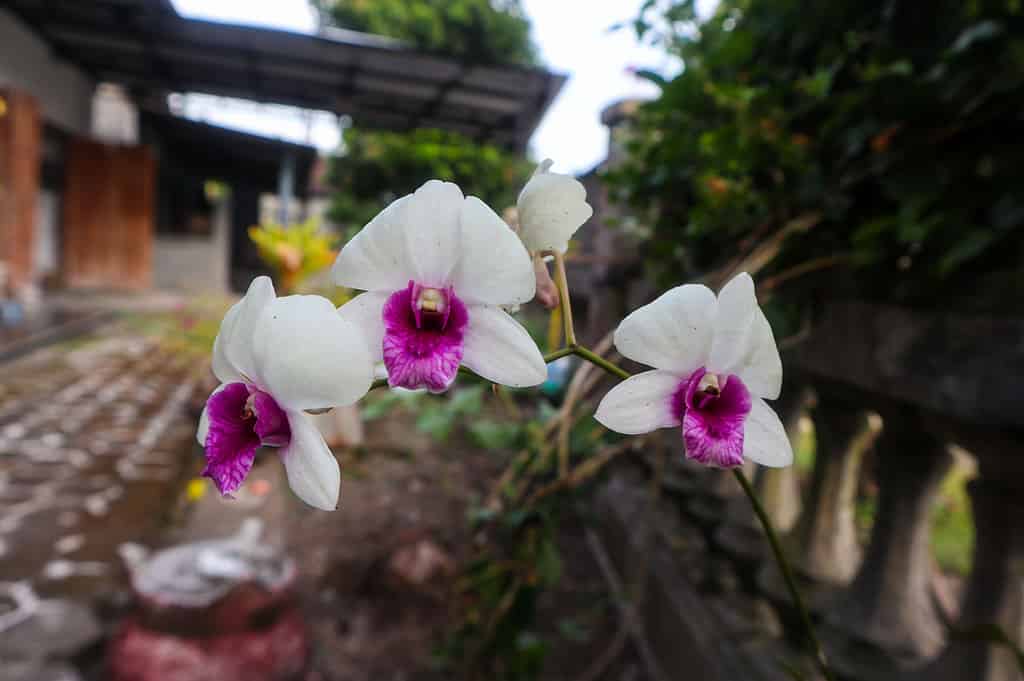
The middle of a moon orchid varies.
©Novi henri aminata/Shutterstock.com
The moon orchid represents one of the most common types of orchid and is fairly simple to cultivate inside as well as outside, provided it is not exposed to direct sunlight. The flowers, which range in hue from bright white to mottled and an array of vibrant solid shades, may flower at any point throughout the year.
It doesn’t matter what color the flower is; closer inspection reveals that the center always resembles a bird.
Dove Orchid

Thunderstorm orchids are also known as the Dove orchid.
©iStock.com/Dwi cahyono
The dove orchid, an astonishing plant endemic to Panama and its neighboring nations, is a unique white blossom that resembles a bird. The blossoms resemble white peonies at a distance. Yet, if you look closely, you can see that the middle resembles a white dove nesting.
This orchid is also known as the Holy Ghost orchid because of the “dove’s” celestial shape. It also has a festival of its own, in a typical South American way. The Holy Spirit Fair honors Panama’s national flower and is hosted in the province of Herrera.
Moth Orchid

One may think a moth orchid would be a dusty brown, but they’re vivid pink with splashes of yellow.
©PAUL ATKINSON/Shutterstock.com
The moth orchid, sometimes known as the bird orchid, is a very similar species of orchid to the moon orchid and is quite common indoors. The flowers resemble moon orchids in terms of appearance and color, but the center of each flower has an exquisite appearance of a phoenix or bird of paradise fluttering within.
Bird of Paradise
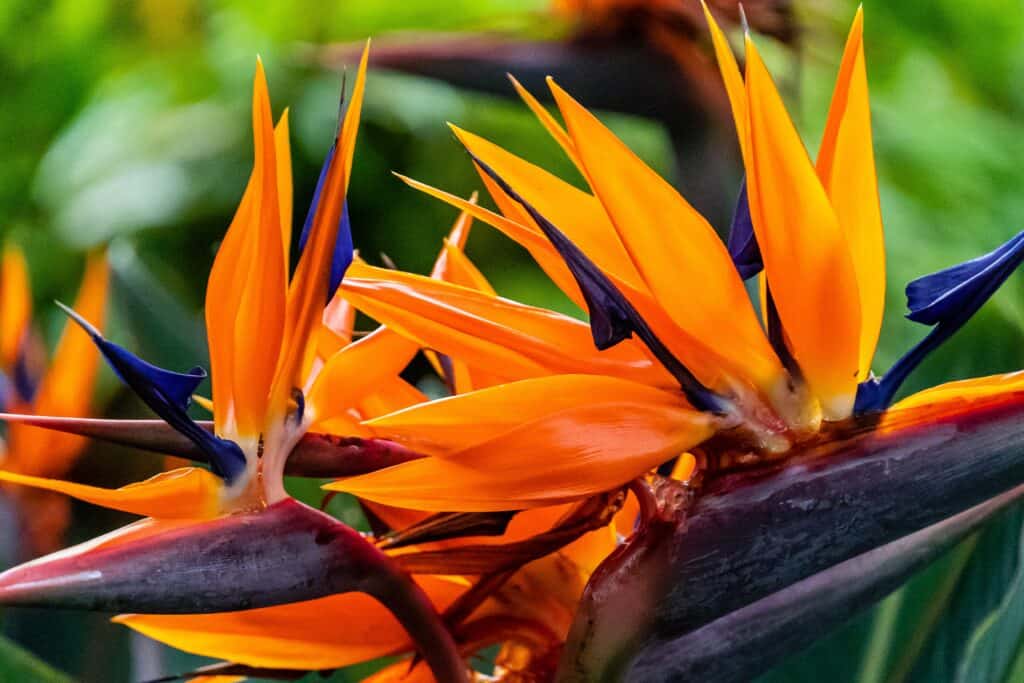
Birds of Paradise’s appearance be interpreted in many ways.
©Wirestock Creators/Shutterstock.com
When considering flowers that resemble birds, the South African bird of paradise plant is frequently the initial one that people think of. In warm climates, this attractive plant can be grown outdoors quite easily.
Keep it inside if you live somewhere with a cooler temperature, but know that it’s less likely to bloom indoors. The blossoms are as dazzling as the tropical birds dubbed birds of paradise. This large plant also has massive beautiful leaves.
Although others contend that the blossoms more closely resemble a crane, the plant is also known as a crane flower.
Western Bearded Greenhood

This plant often looks like multiple birds at once.
©Samantha Haebich/iStock via Getty Images
A species of orchid called the western bearded greenhood is distinguished by a green blossom with a hummingbird-like shape. It is indigenous to Southwest Australia and thrives mostly in subtropical forests and dense forests.
It is nearly impossible for this Australian native plant to flourish far from its native environment. Overall, it’s quite a beautiful flower to admire.
White Egret Orchid

White egret orchid gets its name from its resemblance to the bird, the egret.
©iStock.com/magicflute002
Another orchid making the list is the white egret orchid. This flower is from Korea and Japan. It resembles an egret caught in the midst of flying. This plant has an otherworldly appearance due to its fragile flowers, which resemble paper carvings.
This flower is revered as a representation of joy, luck, and love in the nations where it was first discovered. As long as you are in a region with a warm climate, you are able to cultivate this plant outdoors, whether you wish to entice fortune to your garden or just appreciate how healthy it is.
Regal Bird Flower

This plant also resembles striped pea pods.
©Imagvixen/iStock via Getty Images
The regal bird flower, another hummingbird-like flower from Australia, belongs to the legume family and is a relative of both beans and peas. This flower grows naturally in the mild northern portion of Australia.
It may flourish anywhere else so long as the plant is indoors throughout the winter.
Callista Primula

Soft cane Dendrobium species, lovely flower but last about 2 week.
©hong tong bee/iStock via Getty Images
Callista Primula is an orchid, despite what its name might imply. Despite how it looks, this plant is also not a bird, though it may fool you! The frilled labellum, which is a wide oval shape, actually resembles an open tail, similar to a peacock during mating season.
The bloom appears to be flying since they resemble flapping wings, and many say it resembles a dove. Depending on the specific type, the colors may vary from white, yellow, and mauve to deep purple.
Hanging baskets are the ideal place for Callista primula!
Flying Duck Orchid
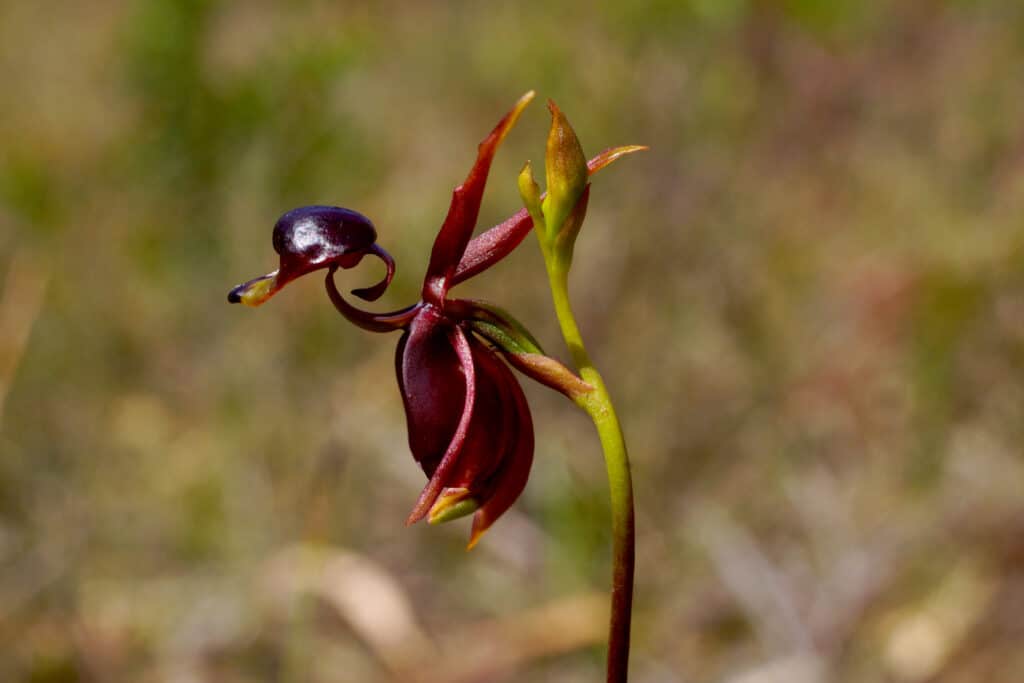
These are one of the most remarkable flowers that resemble birds.
©anjahennern/Shutterstock.com
One of the most amazing orchid varieties is the flying duck orchid, which has an intense purple blossom that resembles a wood duck. It grows naturally in the outback of Australia, where conditions are tough and pollinators are scarce.
The blooms resemble ducks so draw male sawflies. Bugs that enter the “duck’s mouth” are unable to escape. As a result, they have to navigate through the pollen as they emerge from the trap, which is essential for the longevity of the plant.
Yulan Magnolia
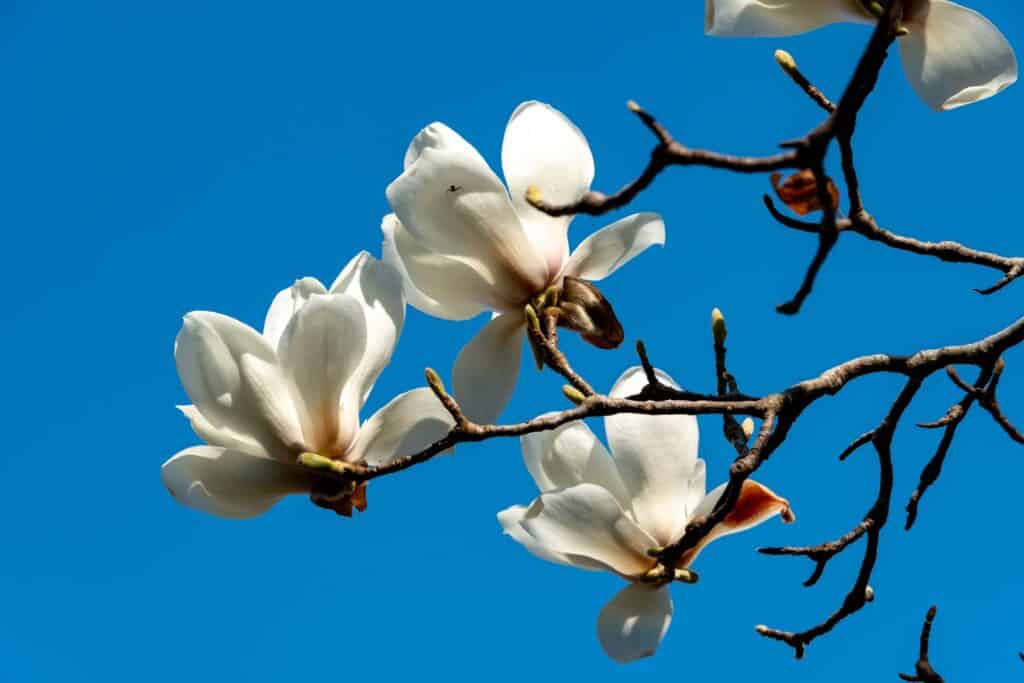
This plant has been around for several hundred years.
©Trialist/Shutterstock.com
The Yulan magnolia, a species of lily or magnolia tree, is indigenous to China and is thought to be the most beautiful of all. It frequently graces public parks and landscaping as well as Buddhist temple grounds in the Red Dragon nation.
This strong tree thrives outside of its natural habitat in temperate climates without very hot or cold weather. Spring is when Yulan magnolias blossom and the flower buds on their branches resemble birds about to take their inaugural flight.
Bat Flower
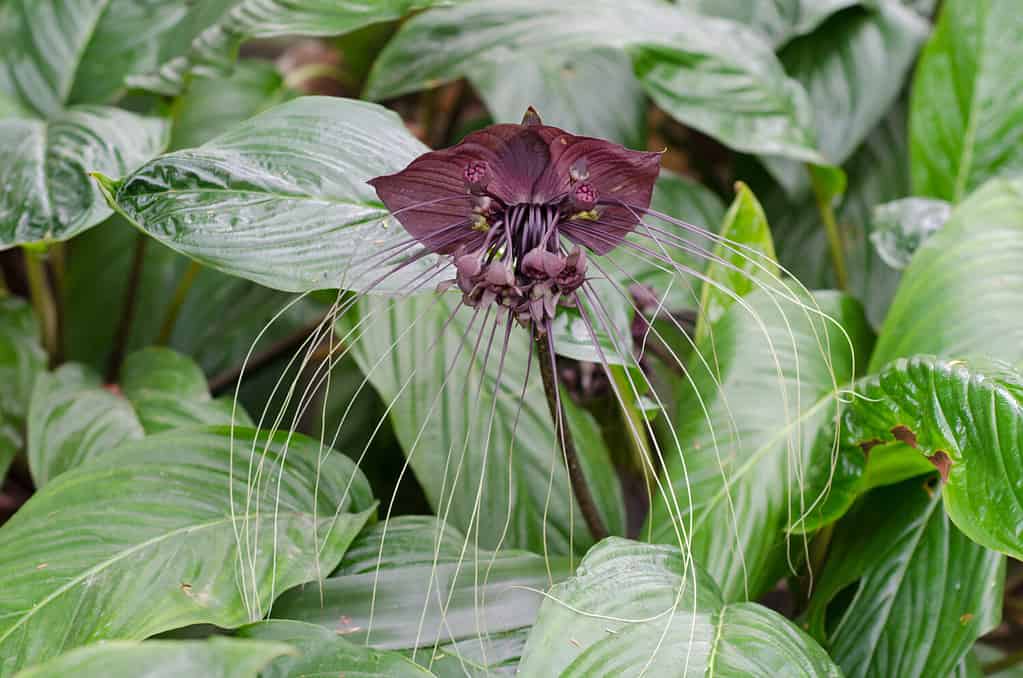
Bat flowers give gardens a gothic feel.
©joloei/Shutterstock.com
The bat flower is an unusual flower with lengthy, dangling filaments that resemble the fanned wings of a bat in flight. In semi-tropical areas, indoor and outdoor flowers may start to develop in springtime and linger through early October.
The bloom is encircled by broad, beautiful leaves. Bat flower cultivation needs a little additional care, but the blooms of this uncommon specialty plant make the effort rewarding.
Exotic Heliconia

The orange blooms against the deep green leaves make these flowers pop.
©pernsanitfoto/iStock via Getty Images
Even while it could be challenging to identify which specific bird it resembles, the exotic heliconia represents one of the more striking brightly colored flowers that appear as a bird, with blooms that are like hornbills and stalks that resemble flamingo legs.
Given its ethereal design, this exotic plant is also known as a lobster claw or false bird of paradise. The exotic heliconia, which is typically seen blooming in the tropical woods of South and Central America, is capable of being grown inside and thrives in areas in warm climates.
Rowo Cucak Flower

Pedilanthus bracteatus is one of the unique ornamental plants whose flowers are shaped like birds.
©Syafrudin Akbar/iStock via Getty Images
The tall slipper plant, also known as the Rowo Cucak flower, is a rapidly developing succulent that is a great option if you’re looking for a plant with plenty of flowers. Some people claim the flowers resemble lady slippers.
You’ll quickly learn that many people believe that the blossoms resemble green birds fluttering their blushing wings. Whatever you see while you gaze at it, this stunning plant may turn into the center of attention in your yard or the star of your home if kept inside.
Songbirds Barrelwort
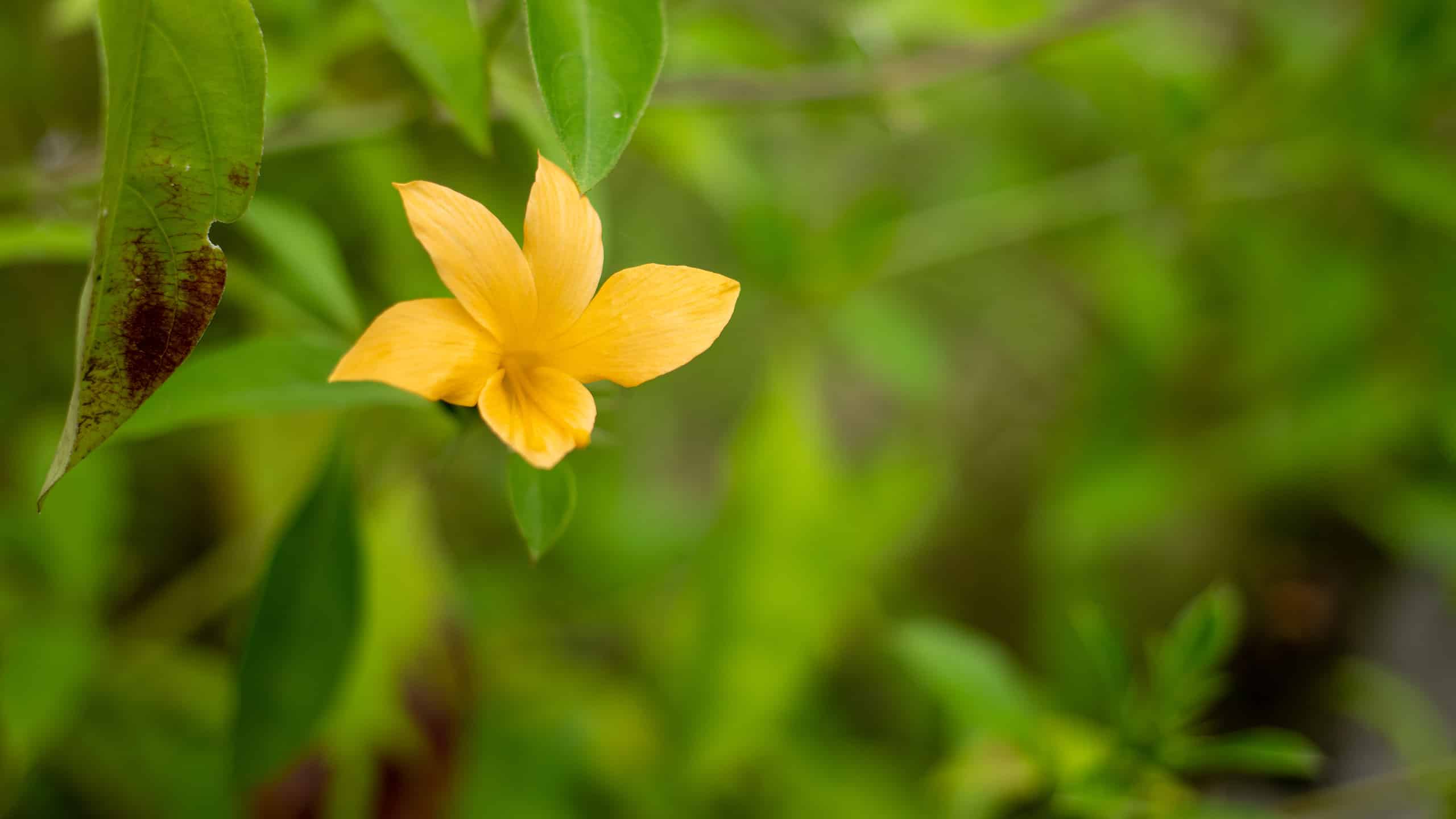
Barleria prionitis is another name for these flowers.
©Hidanhid/iStock via Getty Images
By cultivating ‘Songbirds’ barrelwort, you can attract a horde of flowers that look like small flying birds to your yard. With long, pointy petals that range in color from rose to light magenta to yellow-greenish, the petals appear to be wings.
Additionally, their slender stems make it appear as though a bird is floating in midair.
Vegetable Hummingbird
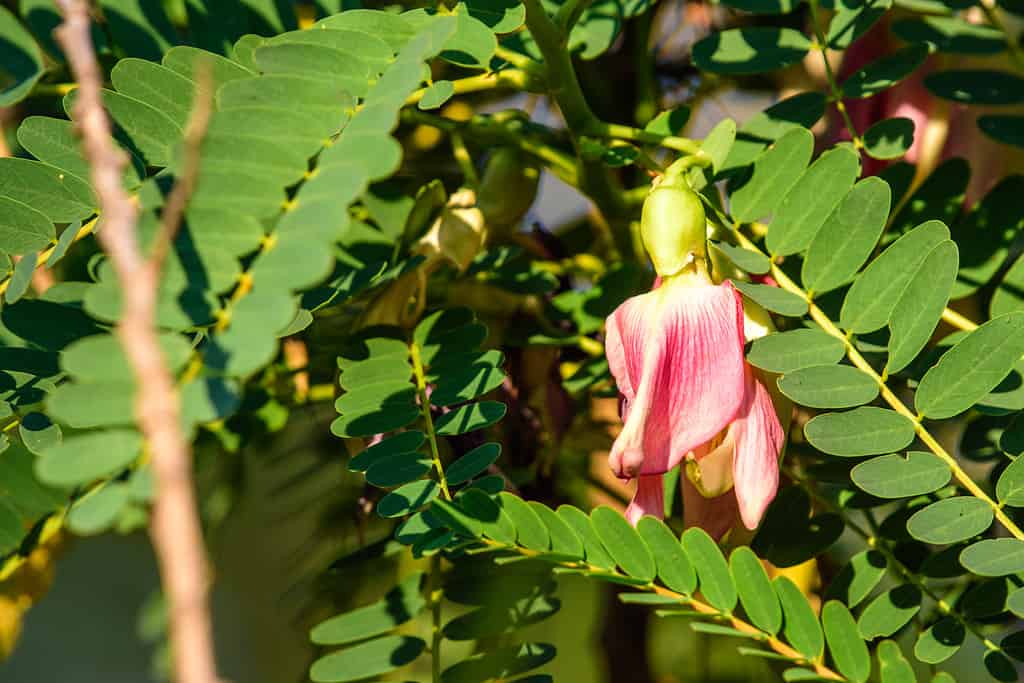
These flowers can be found all over the United States.
©pisitpong2017/Shutterstock.com
The majority of flowers that resemble birds look like hummingbirds. The vegetable hummingbird is among the most attractive trees you might have in the backyard if you are lucky enough to have one.
This petite leguminous plant is indigenous to Australia and Southeast Asia, although it is also grown in India and Sri Lanka. Generally speaking, the plant resembles the natural black locust tree of the US.
The delicious white, red, or pink blossoms of the vegetable hummingbird, which resemble hummingbirds moving backward, are similar to black locust flowers in appearance.
Angel Orchid

Adding these flowers to your garden can help supply ladybugs with aphids.
©FelipeCorrea/iStock via Getty Images
The Angel orchid is a rare species that can be observed in the wide, high-altitude fields of southern India. When you look carefully enough, the magnificent blooms, which have bilobed petals and come in bundles of one to five bear an uncanny resemblance to a shrouded angel.
The Angel flower is a fantastic choice for yards with lots of ladybugs because it might be vulnerable to aphid invasion. As one of the earliest orchids that blossom at the start of the monsoon season, the slightly fragrant flowers bloom from June to July.
Butterfly Pea
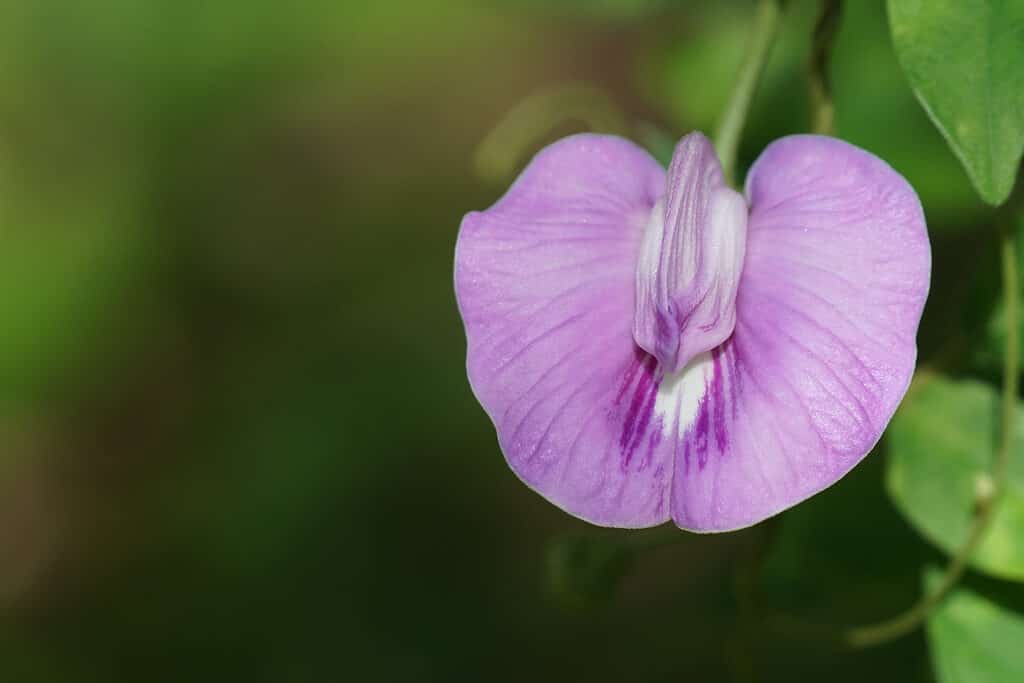
The showy petals of the spurred
butterfly
pea make it a great addition to any home.
©Doikanoy/Shutterstock.com
This lovely wildflower, also called the butterfly pea or the Asian pigeonwings, features wide wings that resemble those of a pigeon. This perennial herbaceous plant is extremely hardy and versatile.
It is commonly used as a decorative or landscaping plant beyond its natural habitat and, once grown, requires minimal maintenance. Because it is a legume, the roots work together with soil microbes to improve the condition of the soil.
Ayurvedic remedies and organic food coloring both contain ingredients that come from flowers.
Dutchman’s Pipe
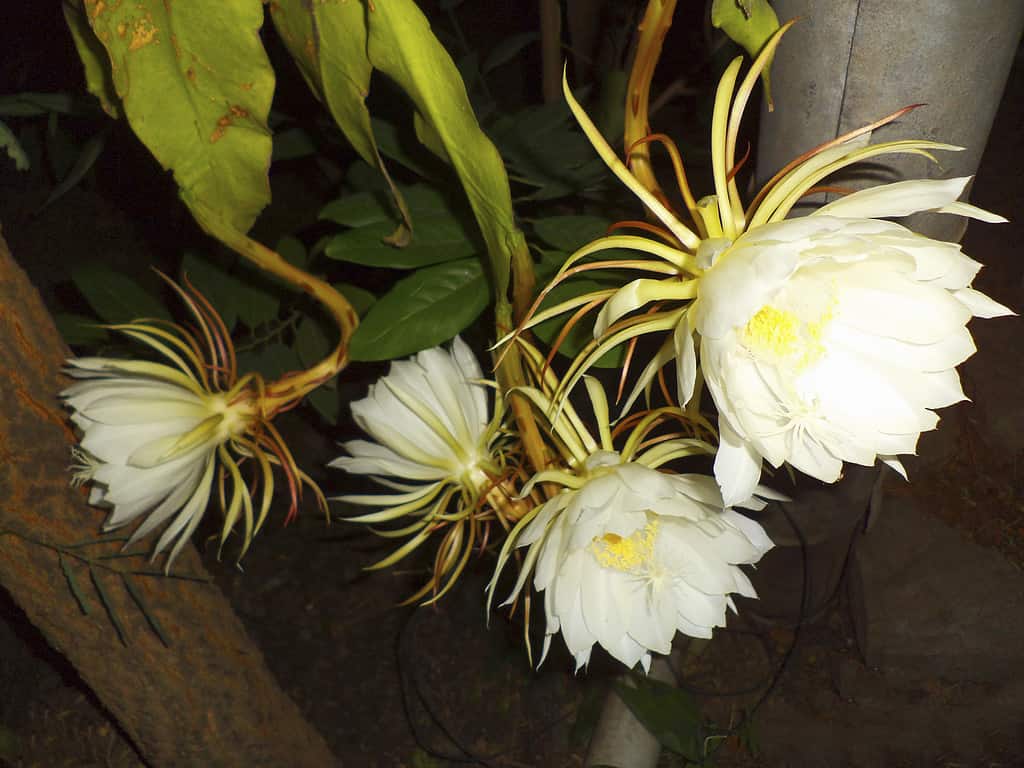
The Dutchman’s Pipe is technically a cactus.
©iStock.com/ePhotocorp
A bloom that resembles a chicken with an extended tail makes the list. With a name like the Dutchman’s Pipe, there’s no denying how peculiar this plant is. If you see it from the opposite angle, it resembles a hornbill with an unusually fat body.
The plant thrives naturally in humid tropical biomes in South America. It has been spread to regions of Africa, Puerto Rico, and Australia because of its impact on the environment and medicinal benefits.
Red Birds in a Tree
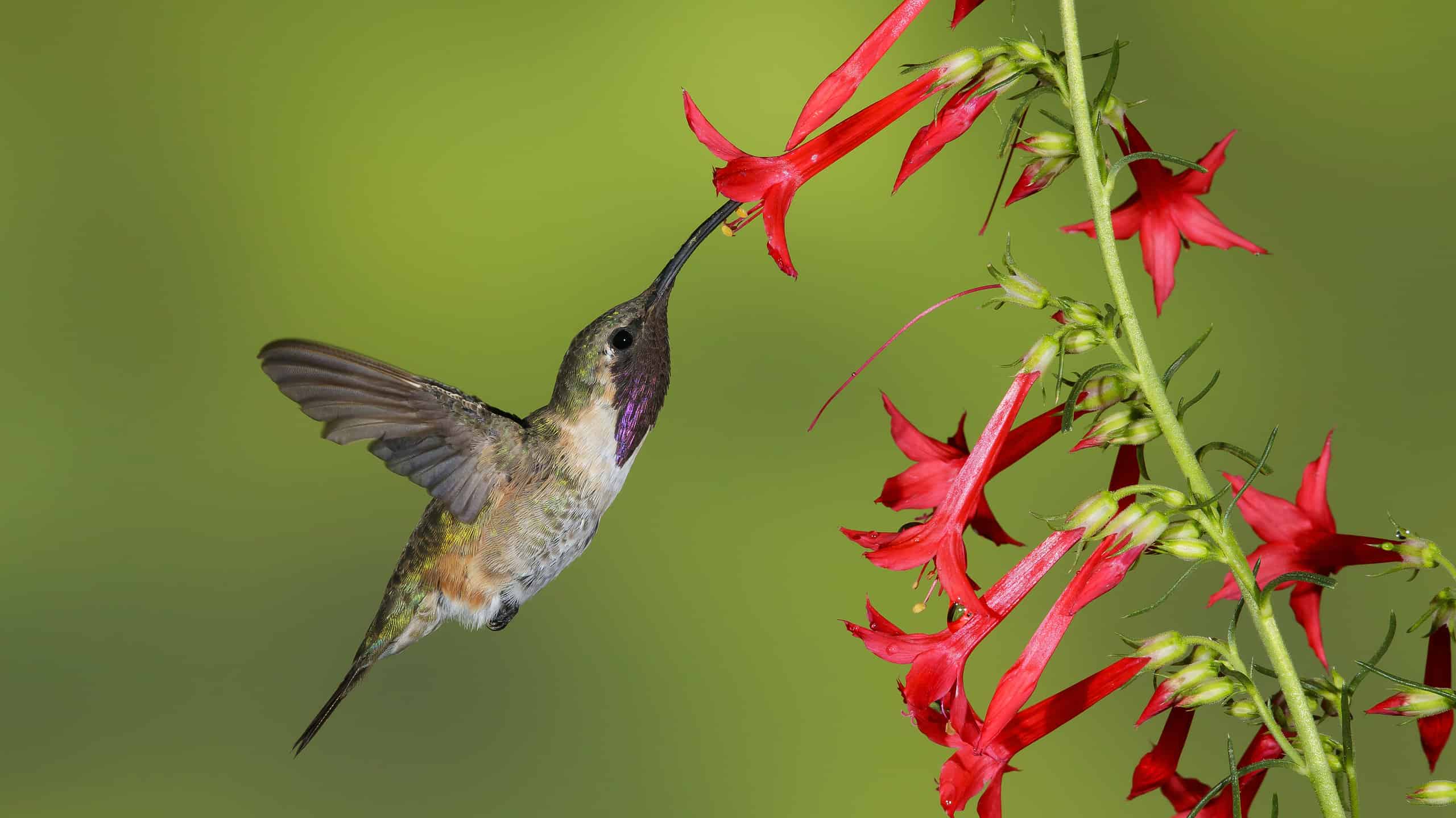
Hummingbirds love the nectar from these flowers.
©AGAMI stock/iStock via Getty Images
Next on our list is the red birds in a tree. This plant is an extremely uncommon perennial native to the southern highlands of New Mexico and Arizona. As you can likely guess, it gets its name because of its red flowers, which resemble cardinal birds sitting on a tree branch.
It is a lucky plant to have in your garden. It’s not easy to find it in stores or nurseries. One of the best things about red birds in a tree is that it attracts a variety of animals. Butterflies, bees, and hummingbirds adore this plant!
Additionally, it can withstand harsh sunlight and is resilient when rabbits come by to have a snack.
Cranefly Orchid

The flower is named after this unique bug!
©Wirestock/iStock via Getty Images
The crane-fly orchid got its name because its blossoms, when viewed from below, resemble cranes in motion. Native to the US, this plant is a perennial forest orchid. It can be found in forests and wooded areas along the East Coast!
Because of the way these petite, irregular flowers look, they draw noctuid moths, which are crucial for pollination. This species of orchid, like the majority of native wildflowers, is difficult to grow in some areas.
Ballerina Orchid

The red and yellow petals on both sides spread like the ‘ballerina arms’, the top petal is like the hat, and the white lower end falls like the ‘ballerina skirt’.
©Beatrice Sirinuntananon/iStock via Getty Images
The ballerina orchid is one of the most stunning flowers on this list! It is native only to southwestern Australia, and it gets its name from the way its petals look like a spinning ballerina.
Some say that this flower resembles a falcon swooping to the earth with its talons poised to capture unaware prey due to the placement of the pistils and the form of the center petals.
Regardless of what you perceive as you look at it, you may easily grow this brightly-colored variety of orchids at home.
Cockspur Coral Tree
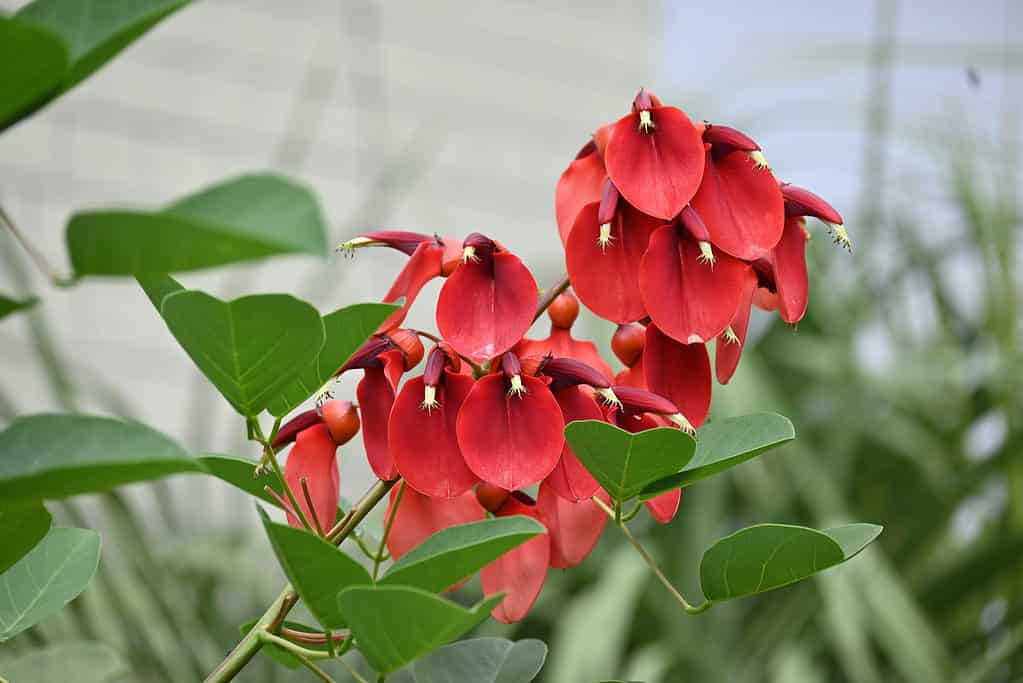
These flowers have some of the most vivid shades of red of any flower.
©iStock.com/ndefined undefined
A diminutive deciduous plant, the cockspur coral tree dazzles with its colorful leaves and vibrant red blossoms. Its name comes from the fact that its flowers resemble roosters or rooster crests.
This hardy plant prefers gravelly, wet, draining soils and direct sunlight. Although it does equally as well in a pot, it often appears in landscaping with a Mediterranean theme. The cockspur coral tree, which is indigenous to Brazil, Paraguay, and Argentina, is essentially immune to pests and harmful plant diseases.
Milkweed

Planting milkweed can help the Monarch population continue to grow.
©Cathy Keifer/Shutterstock.com
The green milkweed, also known as spider milkweed, is a stunning perennial that is native to the United States and a fantastic addition to your garden since it draws monarch butterflies. This plant is the ideal option for anyone looking for a plant that resembles a green parakeet.
Furthermore, it is not consumed by herbivorous animals such as bunnies or deer. Although this plant’s green seedpods resemble upside-down birds, its flowers are simply beautiful without any bird resemblance.
Red Sage Flowers
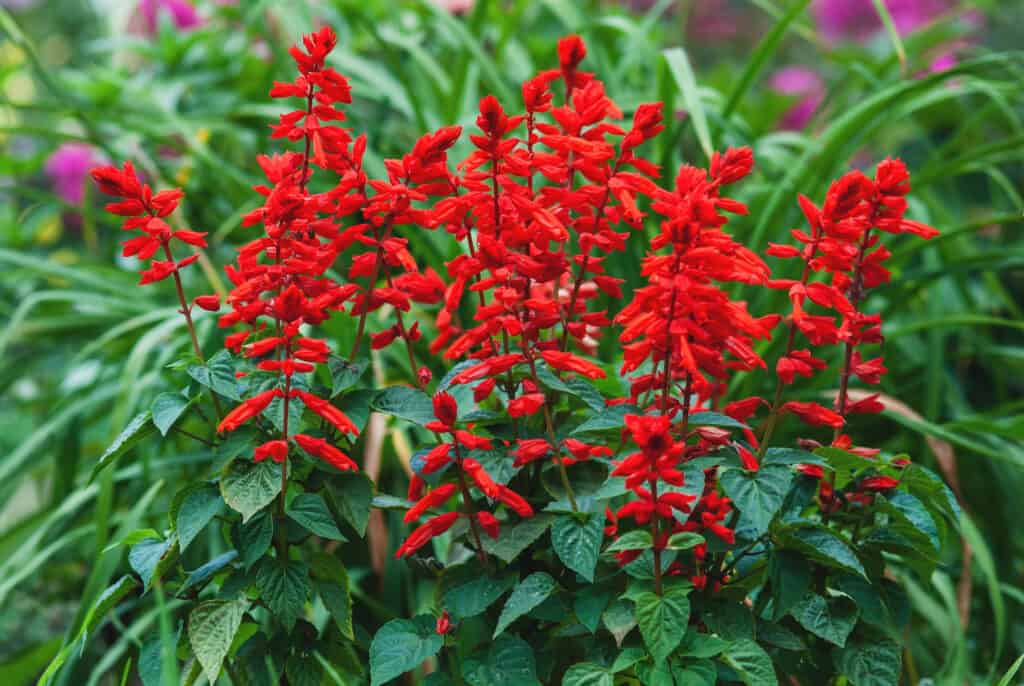
Scarlet sage salvia produces vibrant red flowers that hummingbirds and butterflies enjoy.
©iStock.com/Nadya So
Among the most popular herbs produced in gardens and containers is sage. Although it can be difficult to watch the plant blossom, you can use it in your home for recipes! Sage flowers surprisingly resemble turkeys, though you may need a strong green thumb to spot some blooms.
The red sage bloom is the most beautiful of all the types because it contrasts vivid red with stark white. However, all of the blooms of other sage species resemble birds.
Summary of the Most Beautiful Flowers That Look Like Birds
There are several flowers that look like beautiful birds. We hope this list of 25 shows you just how great nature can be. Considering growing one of the many orchids inside, or plant one of the trees to see lovely blooms in your yard!
| Flower/Plant Name | |
|---|---|
| 1 | Parrot Flower |
| 2 | Moon Orchid |
| 3 | Dove Orchid |
| 4 | Moth Orchid |
| 5 | Birds of Paradise |
| 6 | Western Bearded Greenhood |
| 7 | White Egret Orchid |
| 8 | Regal Bird Flower |
| 9 | Callista Primula |
| 10 | Flying Duck Orchid |
| 11 | Yulan Magnolia |
| 12 | Bat Flower |
| 13 | Exotic Heliconia |
| 14 | Rowo Cucak Flower |
| 15 | Songbirds Barrelwort |
| 16 | Vegetable Hummingbird |
| 17 | Angel Orchid |
| 18 | Butterfly Pea |
| 19 | Dutchman’s Pipe |
| 20 | Red Birds in a Tree |
| 21 | Cranefly Orchid |
| 22 | Ballerina Orchid |
| 23 | Cockspur Coral Tree |
| 24 | Milkweed |
| 25 | Red Sage Flowers |
The photo featured at the top of this post is © COULANGES/Shutterstock.com
Thank you for reading! Have some feedback for us? Contact the AZ Animals editorial team.






